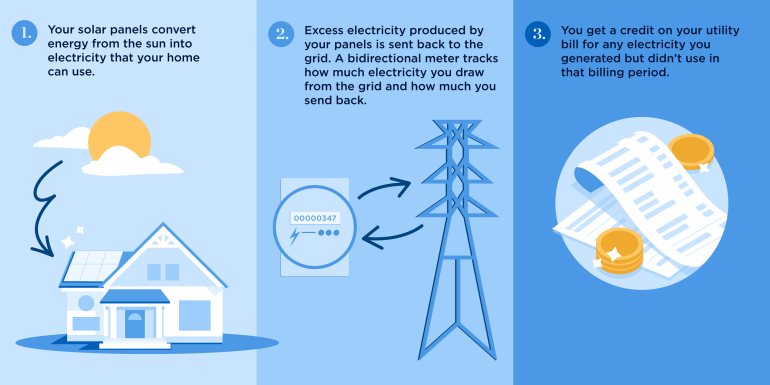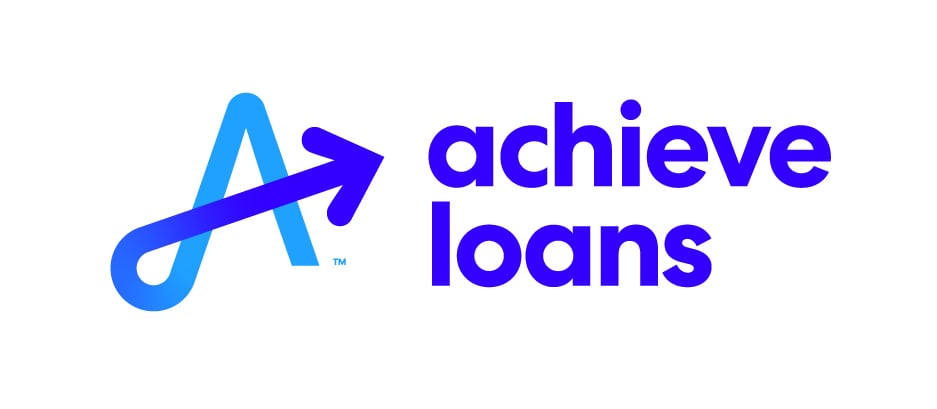Net Metering in 2025: How It Works, What to Know
Net metering is a way to make solar more affordable, but the benefits vary by state.

Some or all of the mortgage lenders featured on our site are advertising partners of NerdWallet, but this does not influence our evaluations, lender star ratings or the order in which lenders are listed on the page. Our opinions are our own. Here is a list of our partners.
What is net metering?
Solar net metering, or NEM, is a billing mechanism that credits homeowners and businesses for excess electricity their solar panels send to the power grid. The credits reduce the owner’s electric bills immediately or at a later time. Net metering, available in many states, makes solar more affordable.
How net metering works
A solar energy system can create more solar power than a home can use at a time. Net metering lets homeowners sell that extra electricity to their utility companies for a check or reduced electricity bill.
When your panels aren’t producing as much electricity as you’re using — or aren’t producing at all, such as at night — you have to draw electricity from the grid. Your electricity meter tracks your usage so your utility company can calculate your bill.
However, if your solar energy system produces more energy than you use, you’ll have extra electricity that you don’t need. If you don’t store that extra energy in a solar battery, you can sell it to your utility provider for them to use for other customers. NEM lets you automatically send that electricity back to the grid. When your solar panels send electricity to the grid, your electricity meter spins backward to track how much you sent to the grid.
Utility companies usually credit a customer’s account — reducing the homeowner's electric bill — instead of paying them for the electricity.

» MORE: Do solar panels work at night?
Generally, net metering will save solar-powered homeowners more money than net billing. Net metering lets you sell your solar-generated electricity to your utility company at the same cost that you would pay to pull it from the power grid. Net billing pays homeowners a cheaper rate for their extra solar energy.
» MORE: Pros and cons of solar panels
The buy-all, sell-all method
A few states offer a “buy-all, sell-all” system in which all of your solar-generated electricity goes to the grid in exchange for billing credits. Then, using a separate electric meter, you buy all your electricity from the utility. This method is still net metering for the homeowner, but they can see more clearly with the separate meters how much energy they're using each month.
» MORE: How long do solar panels last?
How much can you save on your electric bills with net metering?
Your net metering savings will depend on several factors, including:
How much your utility company credits electricity it purchases through net metering (known as the rate).
Utility fees that you may have to pay outside of charges for the electricity you've used.
How much electricity you use compared to how much your system generates.
Depending on your state’s net metering program, you might be able to modify some of your energy usage to earn more credits and pay less. For example, if you can reduce the amount of electricity you use during peak times, you might not need to pull electricity from the power grid during those times.
Leave some room in your budget for an electricity bill even if you can participate in net metering. Many utilities charge a fee for building and maintaining the electric grid, so you’re unlikely to get your bill to zero with solar unless your system generates more electricity than you use.
» MORE: How solar leasing works
Which states have net metering?
As of April 2025, more than 30 states, Washington, D.C., and a few U.S. territories had a mandatory net metering policy, according to the North Carolina Clean Energy Technology Center. Many of the states that don’t have net metering or net billing have either voluntary net metering or some other form of crediting or billing system for solar sent back to the grid.
For the latest in your state, refer to the Database of State Incentives for Renewables & Efficiency (DSIRE).
Net metering vs. solar batteries
Solar batteries can be an alternative to net metering. Instead of sending excess solar power back to the grid at a low rate, solar panels send the excess power to a battery for use when your solar panels aren’t generating enough power. This can be a good option if you’re worried about power outages or want to avoid paying for electricity from the grid at night.
Homeowners who install qualifying solar battery storage systems in 2025 can claim a federal tax credit to offset some of the installation cost. However, you have to pay for the installation before January 1, 2026, to receive the credit.
Some states also offer incentives for installing solar battery storage systems, which have different requirements and deadlines than the federal tax credit.
Can I get financing for a solar panel system?
In addition to tax incentives and rebates, there are options available. Many solar installers offer financing, but you may also be able to finance your solar investment through a home equity loan or home equity line of credit (HELOC). These options may have lower interest rates than financing with an installer, future opportunities for refinancing and possible tax benefits.
Home equity loans and HELOCs are ways to borrow against the value of your home, converting equity into cash. With a home equity loan, you receive a lump-sum payment and then pay it back at a fixed interest rate over an agreed period of time, typically from five to 30 years. HELOCs are more akin to a credit card, something you use as needed. You’ll usually have 10 years to draw from the line of credit, during which time you only have to pay interest, and after that you pay both the principal and interest. HELOC interest rates typically are variable, meaning your monthly payment could rise or fall over time. And with each of these options, you're using your home as collateral.
Another option is a solar loan. Many banks, credit unions and online lenders offer these to fund solar panels and installation, with amounts typically from $1,000 to $100,000, and annual percentage rates ranging from 6% to 36%. They function like a personal loan: you receive a lump sum and repay it in equal monthly installments over a set period, typically two to seven years. And unlike with home equity financing, there is no collateral required for a solar loan. This means your home or solar panels aren’t at risk if you miss payments, but you may have to pay late fees.
So, yes, you likely can get financing. If you go this route, compare interest rates, terms and fees with any financing package that a solar provider may offer you to ensure you get the best deal.






